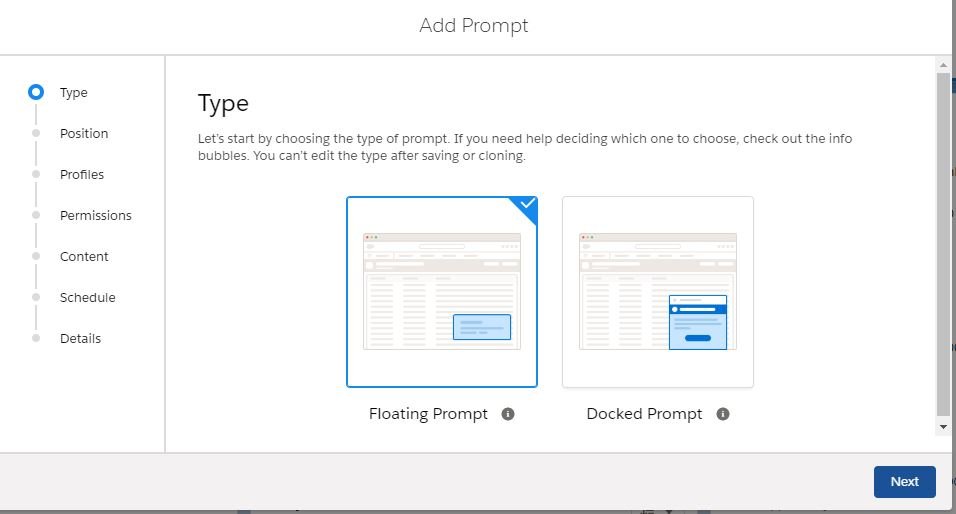With salesforce in-app guidance at the forefront, organizations are embracing innovative ways to enhance user engagement and streamline processes. This feature stands out by providing real-time assistance and personalized walkthroughs, making it easier for users to navigate complex systems. In an era where user experience is paramount, leveraging in-app guidance is not just beneficial but essential.
This approach not only simplifies tasks for users but also boosts productivity and reduces the learning curve associated with new software functionalities. By integrating tailored guidance seamlessly into the user interface, Salesforce is setting a new standard for digital interaction.
In today’s fast-paced digital world, the importance of effective communication cannot be overstated. Businesses, individuals, and organizations alike rely on clear, concise, and engaging content to connect with their audiences. This article explores the nuances of effective communication, emphasizing its significance in both personal and professional settings.Effective communication is not merely about exchanging information; it’s about understanding the intention behind the information.
Whether you are writing an email, giving a presentation, or engaging in a casual conversation, the way you convey your message can greatly influence its reception. To truly engage your audience, consider the following key elements of effective communication. 1. Clarity and ConcisenessOne of the hallmarks of effective communication is clarity. When you express your thoughts clearly, your audience will have a better understanding of your message.
Avoid jargon and overly complex language; instead, opt for simplicity without sacrificing depth. For example, if you’re discussing a technical topic, break it down into digestible parts, using analogies or examples that your audience can relate to.Conciseness is equally important. In a world inundated with information, getting straight to the point can help retain your audience’s attention. Aim to deliver your message in as few words as possible while still getting your point across.
This does not mean being curt or dismissive—rather, it involves honing your message to include only the most essential elements. 2. Understanding Your AudienceTailoring your communication to your audience is crucial. Consider their interests, knowledge level, and expectations. Are you speaking to industry experts or a general audience? The language and examples you use should reflect their understanding and interests.
For instance, if you are presenting to a group of marketing professionals, you can use industry-specific terms that resonate with them. Conversely, if your audience is unfamiliar with your field, it’s best to use layman’s terms and relatable examples. 3. Active ListeningEffective communication is a two-way street. Active listening is just as important as articulating your thoughts. When engaging in a conversation, make a conscious effort to listen to what others are saying.
This involves not just hearing their words but also understanding the emotions and intentions behind them. By doing so, you can respond more thoughtfully, fostering a deeper connection with your audience.Consider using techniques like summarizing what the other person has said, asking clarifying questions, and providing feedback. This not only demonstrates that you value their input but also ensures that you are on the same page.
4. Non-Verbal CommunicationA significant portion of our communication is non-verbal. Body language, facial expressions, and even tone of voice play critical roles in how our messages are perceived. For example, maintaining eye contact can convey confidence and engagement, while crossed arms may signal defensiveness or disinterest.Be mindful of your non-verbal cues, as they can either reinforce or contradict your verbal message.
Practicing good posture, using appropriate gestures, and varying your tone can help to enhance your communication and make it more engaging. 5. Empathy and Emotional IntelligenceEmpathy is the ability to understand and share the feelings of others, which is vital for effective communication. When you can empathize with your audience, you are better equipped to address their concerns and respond to their needs. This is where emotional intelligence comes into play—understanding not only your own emotions but also the emotions of those you communicate with.To cultivate empathy, take the time to consider your audience’s perspectives.
What challenges are they facing? How might your message resonate with them? By acknowledging their feelings and responding appropriately, you can build stronger relationships based on trust and mutual understanding. 6. AdaptabilityEvery communication scenario is different, and being adaptable can significantly enhance your effectiveness. Be open to adjusting your message or approach based on the feedback you receive.
If you sense that your audience is disengaged, consider changing your delivery style. Incorporate questions, interactive elements, or relatable anecdotes to recapture their attention.Additionally, be aware of the context in which you are communicating. Formal situations may require a more structured approach, while informal settings might allow for a more relaxed and conversational tone. Flexibility in your communication style can help you connect more authentically with your audience.
7. Feedback and ImprovementFinally, don’t shy away from feedback. Seeking input on your communication style can provide valuable insights into areas where you can improve. Whether it’s through formal evaluations, informal discussions, or self-reflection, make an effort to learn from each communication experience.Moreover, take note of effective communicators around you. Observe their techniques and consider how you might incorporate their strategies into your own style.
Improvement is an ongoing process, and with each interaction, you have the opportunity to refine your skills.In conclusion, effective communication is an invaluable skill that can enhance every aspect of your life. By focusing on clarity, understanding your audience, practicing active listening, being mindful of non-verbal cues, cultivating empathy, adapting your approach, and embracing feedback, you can elevate your communication to new heights.
Remember, the goal is not merely to convey information but to foster connections that resonate. So, take a moment to reflect on your own communication practices and strive for continuous improvement. Your relationships—both personal and professional—will undoubtedly benefit from your efforts.
Question Bank
What is Salesforce in-app guidance?
It is a feature within Salesforce that provides real-time assistance and user-friendly walkthroughs to enhance navigation and usability.
How does in-app guidance improve user engagement?
By offering contextual help and personalized tips, it helps users understand and utilize features more effectively, leading to higher engagement.
Can in-app guidance be customized?
Yes, Salesforce allows customization of in-app guidance to cater to specific user needs and business processes.
Is in-app guidance beneficial for new users?
Absolutely! It provides essential tips and tricks that can significantly reduce the learning curve for new users.
What types of content can be displayed with in-app guidance?
You can display tooltips, step-by-step walkthroughs, and links to tutorials or support documentation.












